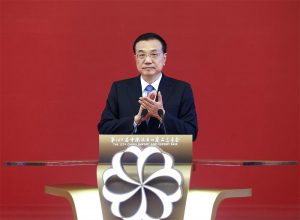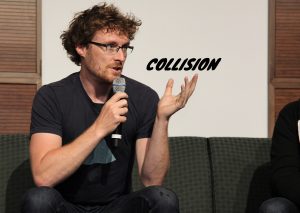Large scale gatherings have become a relic of a pre-COVID-19 era, and with the virus continuing to resurface around the world, industry conferences, summits, and other events are forced to either adapt or perish. Many of 2020’s largest and most highly anticipated offline events have had to hastily shift their operations to craft an engaging online experience for attendees.
However, with differing public health conditions among countries around the world, many event organizers are individually assessing circumstances, while others have simply postponed their offline events or even canceled altogether.
127th Canton Fair
After 63 years, the China Import Export Exhibit in Guangzhou, commonly referred to as the Canton Fair, transitioned to an online conference this June. The fair is one of the world’s largest trade shows showcasing a range of products from large machinery and industrial equipment to consumer electronics and home appliances.
Although the event has never been disrupted since its inception, with the onset of the COVID-19 pandemic, many feared that this year’s Canton Fair would go the way of Mobile World Congress 2020, and be yet another casualty of the virus.

Instead, the Canton Fair administrators reacted nimbly and began the daunting task of shifting the event online, which is no small feat, considering that the Canton Fair is a massive event rooted in physical products to exhibit China’s manufacturing prowess. For scale, the 2019 edition generated an export volume of over USD 1.4 trillion and the total number of overseas buyers reached nearly 9 million.
Lasting 10 days, the online edition of the Canton Fair attracted over 25,000 exhibitors from across China who came to market their goods to an international customer base hailing from 217 countries. In total, the Canton Fair hosted 24 cloud-based virtual promotions, five virtual signing ceremonies for trade contracts, 20 virtual fashion shows, and 64 product launches.
Shenzhen-based tech giant Tencent (HK:0700) provided the technical support and cloud services for the event, while also offering video conferencing services for one-on-one negotiations between sellers and buyers. The Canton Fair has also adopted one of China’s hottest sales tactics: livestreaming, with a nonstop 24 hours a day livestreaming channel open to all its followers.
The use of livestreaming in the event has facilitated access to sales channels for many SMEs in China. For example, Tibetan honey sellers were able to market their products in innovative ways, as they were able to vividly show buyers the source of the product, while for Xinjiang’s fruit sellers, the online portal increased efficiency by reducing the travel and labor costs of attending an offline event. Some vendors have even leveraged virtual reality technology to provide immersive 3D experiences to potential buyers.
However, the largest obstacle in maximizing the power of these digital solutions is the vendors’ lack of experience in online marketing and livestreaming sales tactics. While last-ditch measures were taken to try and educate exhibitors, a mature understanding of online sales has yet to be cultivated on a widespread scale. Merchants previously well-versed in the art of face-to-face negotiation were forced to adapt and try to maximize the impact of their digital interactions.
Apple WWDC 2020
Other international offline events such as Apple’s Worldwide Developer Conference 2020 (WWDC), have also gone online. This year’s WWDC was accessible for free via livestream on Apple’s website, a stark departure from the in-person event held at the McEnery Convention Center in San Jose, California, that commanded a ticket price of USD 1,600.
The event, which is usually held in early June, took place from June 22-26, to allow Apple (NASDAQ:AAPL) sufficient time to prepare for the new format.
Going completely online also provided more access to viewers around the world. For example, Chinese viewers were able to follow the keynote on major streaming platforms including Tencent Video, iQiyi (NASDAQ: IQ), Bilibili (NASDAQ: BILI), and Youku.
The new digital format also featured a development forum with over 1,000 one-on-one sessions between developers and Apple engineers, along with 100 open lectures, democratizing access to Apple’s expertise. Some developers lamented the structured nature of the lab sessions, as the digital event lacked the informal chats and observation opportunities attendees can gain from the offline interaction, also known as chalkboard sessions.

Instead of presentations lasting a set 40 minutes, Apple released shorter high impact films on various topics, ranging from two-minute recap videos available for playback to other explainer videos on technical topics that ranged from seven to 15 minutes.
One of Apple’s strong points as a technology company has always been its strong branding that has cultivated an almost cult-like fandom among its users. The digital WWDC allowed this to flourish in the form of community engagement sites and watch parties, where the latest activities at the conference could be discussed by groups of enthusiasts.
However, the lack of in-person interaction limited the ability for attendees to socialize and network, which was previously one of the event’s major selling points that allowed it to command a hefty price tag.
Collision From Home
The Collision Conference is a North American tech conference that features over 32,000 attendees, 800 investors, and 1,000 startups spanning 140 countries. Typically hosted in Toronto, Canada, this year’s version, named Collision From Home, pivoted to a digital format due to COVID-19. Speakers included a wide variety of personalities from across industries including technology, media, entertainment, and more, including the WHO’s chief Tedros Adhanom Ghebreyesus, and Microsoft’s president Brad Smith.
Paddy Cosgrove, CEO and founder of Collision, spoke about the pros and cons of transitioning to an online event in a recent interview with MarketWatch. He highlighted a digital event’s capacity to produce rich data that can be analyzed, especially attendees’ online behavior. This more granular approach to tracking attendee engagement for events could result in a more customized and personalized attendee experience in the future, he said.

At the same time, Cosgrove acknowledged that the in-person networking element of Collision will be difficult to replicate online. He explained, “The flurry of networking is the utility of conferences. Speakers and panels are an excuse to go.”
Despite the reach of Collision’s event this year, Cosgrove plans to hold his next conference Web Summit offline, in Lisbon, Portugal at the start of December. A month later than originally scheduled, Web Summit is one of Europe’s biggest technology conferences, and attracted 70,000 participants in 2019, and expects nearly 100,000 this year.
Portugal has been hailed as a relative success story in containing the spread of COVID-19 compared to many of its fellow European nations, and Web Summit will adhere to all health protocols and guidelines decided at the time.
While the digital format may not stick for Cosgrove and Collision, the Irish-born founder acknowledged that the global scope of digital conferences holds massive potential for the future of events.

Startup conferences in China
Slush China, a startup community founded in 2008 that hosts the largest international startup event in China, plans to hold its flagship Slush Shanghai 2020 in October, completely offline, bucking the trend of online events. Billed as a celebration of entrepreneurship and innovation in China, Slush Shanghai will host over 15,000 attendees at the World Expo Convention and Exhibition Center.
The Slush China community is also scheduled to host another conference, the S Tech-fest Yangzhou 2020, which aims to fuse technology and music. Although exact dates have not been announced, the first-ever event S Tech-fest is due to take place in Yangzhou, Jiangsu province.
Startup Impact Summit in Hong Kong, part of the Smartmeup HK Festival, has also altered its plans for 2020. Instead of hosting their event in February as originally planned, the organizers shifted to a fully online conference in July. Bringing together investors, entrepreneurs, and startups from around the world, the Startup Impact Summit attracted over 20,000 attendees in the 2019 edition, with over 200 speakers and 1,000 investors.
Although some events in China are still planned to take place in-person later this year, a reemergence of COVID-19 in the country could dash those plans as well, posing some major challenges to the future of the offline event industry. For now, event planners are focusing on retraining attendees, speakers, and participants to maximize the value of their online interactions, as large parts of the global economy transition to a “new normal” post-COVID-19.

